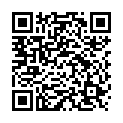|
|
|
| Module code: E917 |
|
|
2V+2PA (4 hours per week) |
|
5 |
| Semester: 9 |
| Mandatory course: yes |
Language of instruction:
German |
Assessment:
Project work, oral examination
[updated 12.03.2010]
|
E917 (P211-0258) Electrical Engineering, Master, ASPO 01.10.2005
, semester 9, mandatory course
|
60 class hours (= 45 clock hours) over a 15-week period.
The total student study time is 150 hours (equivalent to 5 ECTS credits).
There are therefore 105 hours available for class preparation and follow-up work and exam preparation.
|
Recommended prerequisites (modules):
None.
|
Recommended as prerequisite for:
|
Module coordinator:
Prof. Dr. Martin Buchholz |
Lecturer:
Prof. Dr. Martin Buchholz
[updated 12.03.2010]
|
Learning outcomes:
After successfully completing this module, students will understand the structure and functional principles of complete transmitter/receiver systems used in high-frequency engineering. They will also be acquainted with transmission techniques and standards and will be able to compute and realize HF assemblies and systems. Students will be in a position to compute the antenna line-up for a transmission chain. They will acquire skills in the computer-aided design of HF circuits and systems, and will be able to calculate, optimize and construct different types of antennas and microstrip lines and will know how to measure and verify their properties.
[updated 12.03.2010]
|
Module content:
1.Transmitter and receiver architectures
2.System design concepts
3.Modulators and demodulators for analogue and digital modulation techniques
4.Simulation and design of active and passive RF components and systems
5.Computer-aided dimensioning of interface circuits and RF filter synthesis
6.Stability and large-signal response
7.3D field simulations
8.Antenna design
9.Building microstrip circuits
10.Commissioning HF transmitter and receiver modules
[updated 12.03.2010]
|
Teaching methods/Media:
Lecture notes; EDA tools such as Ansoft Designer, ADS, Microwave Studio; lab work
[updated 12.03.2010]
|
Recommended or required reading:
Razavi, B.: RF Microelectronics, Prentice Hall, 1997
Vizmuller, P.: Design Guide Systems, Circuits and Equations, Artech House, 1995
Johnson, R.; Sethares, W.: Telecommunication Breakdown – Concepts of Communication Transmitted via Software Defined Radio, Prentice Hall, 2003
Pozar, D.: Microwave Engineering, John Wiley, 1998
Lee, K.; Chen, W.: Advances in Microstrip and Printed Antennas, John Wiley, 1997
Visser, H.: Array and Phased Array Antennas Basics, John Wiley, 2005
Mailloux, R.J.: Phased Array Antenna Handbook, Artech House, 2005
Makarow, S.: Antenna and EM Modeling with Matlab, John Wiiley, 2002
[updated 12.03.2010]
|


